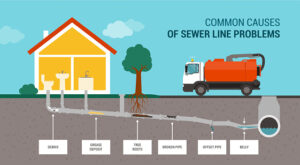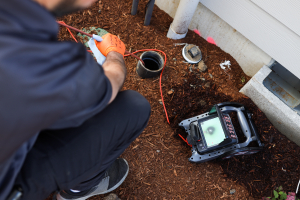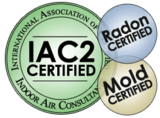What is Involved in a Sewer Scope Inspection?
An experienced inspector will use a flexible camera to examine the sewer line by inserting it through an access point, such as a cleanout. The camera will capture real-time footage of the interior of the sewer line, enabling the inspector to detect any problems. The inspector will evaluate the condition of the pipe, searching for blockages, leaks, cracks, and other indications of damage. Once the inspection is complete, you will receive a comprehensive report containing the findings and recommendations for any necessary repairs or maintenance.
How to Interpret the Results of a Sewer Scope Inspection. The inspection report will include pictures from the camera, accompanied by a report that highlights any defects or concerns. -Common findings may include root intrusion, pipe deterioration, misalignment, or blockages. Based on the severity of the identified issues, recommendations for repairs or maintenance will be provided.
Why Should You Get A Sewer Scope?
Getting a sewer camera inspection done prior to buying a house could be a wise move as it might spare you from costly repairs. This inspection will reveal whether the property’s sewer pipes are obstructed by roots or if there are any hidden damages that a regular plumbing inspection might miss. Investing in a sewer camera inspection before purchasing a home is definitely worthwhile as it grants you the opportunity to see the condition of your drain and sewer pipes. It’s important to have peace of mind, knowing that your plumbing system is in excellent condition and reduces the chances of a significant sewer backup.
Discoveries Await
- Blockages and Buildup: One common find is blockages caused by debris, grease, or even tree roots invading the pipe. These can restrict flow and lead to backups, potentially causing costly repairs if not addressed.
- Cracks and Damage: The camera’s high-resolution footage can uncover cracks or breaks in the pipes, which might be caused by shifting soil, aging materials, or even external pressures. These issues can lead to leaks and further deterioration if left unchecked.
- Infiltration: During heavy rains, sewer systems are vulnerable to infiltration from groundwater or rainwater, especially in older clay or concrete pipes. This infiltration can overwhelm the system and lead to overflows or sewage backups.
- Improper Installation: Occasionally, improper installation or construction defects become apparent through sewer scoping. This might include pipes that are misaligned, poorly connected, or improperly sloped, all of which can impair the sewer system’s functionality over time.
Significance of a Sewer Scope for Freshly Constructed Homes

When buying a new home, it’s easy to assume that everything is in perfect condition. However, even brand-new homes can experience sewer problems that, if left unchecked, could lead to costly repairs and significant inconvenience. Here are some common issues that can occur in new home sewer systems and why they happen:
Construction Debris Causing Blockages
One of the most frequent causes of sewer problems in new homes is construction debris. During the building process, it’s not uncommon for materials like small pieces of wood, drywall, nails, and other debris to inadvertently end up in the sewer lines. This debris can create blockages that prevent waste from flowing properly through the pipes, leading to backups and potential damage.
How to Address This:
- Sewer Scope Inspection: Before finalizing your home purchase, ensure a sewer scope inspection is conducted. This will help identify any blockages caused by construction debris.
- Professional Cleaning: If debris is found, a professional plumber can clean the sewer line, removing any obstructions and ensuring smooth operation.
Poor Installation Practices
While you may expect everything to be installed perfectly in a new home, mistakes can happen. Poor installation practices, such as improper pipe alignment, inadequate sealing, or using substandard materials, can lead to significant sewer issues. These mistakes might not be immediately apparent but can cause problems down the line.
Signs of Poor Installation:
- Frequent Backups: Regular sewer backups might indicate issues with pipe installation.
- Slow Drains: If water drains slowly from your sinks, tubs, or toilets, it could be due to poorly installed pipes.
- Unpleasant Odors: Persistent sewer smells in your home can be a sign of inadequate sealing or faulty installation.
A sewer scope inspection is a small investment that can protect you from significant headaches and expenses down the line. Whether you’re buying a brand-new home, an older property, or maintaining your current residence, ensuring the condition of your sewer line is crucial. By addressing potential issues early, you can safeguard your home’s value and avoid the inconvenience and cost of unexpected plumbing disasters. Don’t wait for a problem to arise—get a sewer scope inspection and ensure your home’s plumbing is in top shape.


